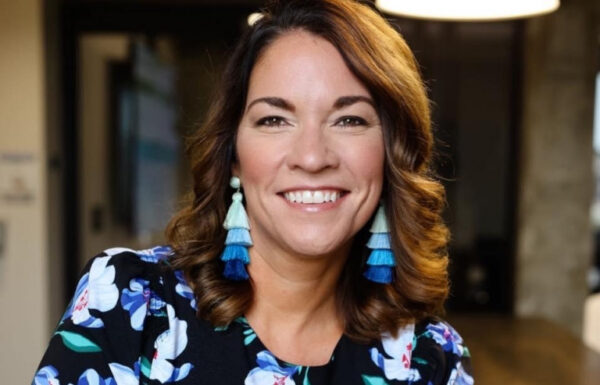What the New Federal Spending Bill Means for Central Indiana
Written by Jennifer Bartenbach, CEO of Central Indiana Community Foundation, and Alan Berube, Senior Vice President, Policy & Innovation Center
In July, Congress passed the mammoth “One Big Beautiful Bill Act.” At a hefty 870 pages, the bill squeaked through the Senate by a vote of 51 to 50, with three Republican Senators joining unanimous opposition from Democrats to force a tiebreaking vote from Vice President J.D. Vance.
The new law touches on everything from tax cuts to immigration to fossil fuels. As people with decades of experience in regional philanthropy, community investment, and economic policy, we want to share a few ways the bill could impact Central Indiana families, and how our region’s robust nonprofit sector can respond.
Lower taxes, higher deficits, fewer services
There are various ways to calculate the bill’s overall revenue losses and/or potential gain; the nonpartisan Congressional Budget Office predicts the new law will eventually cost the federal government $3.4 trillion over a decade. That is largely due to a permanent extension of tax cuts enacted in 2017 that were originally set to expire on December 31st of this year.
Consequently, the bill also includes spending reductions on various services utilized predominantly by low-income working households. Supporters claim the cuts will only reduce fraud and waste; though, according to analysis from the Yale Budget Lab:
“Changes… proposed by the Senate budget reconciliation bill would result in a decline of 2.9 percent (about $700) in income for the bottom quintile, but an increase of 1.9 percent (about $30,000) for the top 1 percent.”
Furthermore, a 2019 study on Arkansas’ similar work requirements for Medicaid showed declines in both Medicaid coverage and employment relative to non-work-requirement states.
In short: Some lower income Hoosiers will likely have to do a lot more with less income and health coverage. That will do little to improve upward mobility in Central Indiana.
Reduced healthcare access
The bill reduces federal support for Medicaid by about $1 trillion over 10 years beginning in 2027.
As a result, many Americans anticipate a growing need for health support, especially in states like Indiana with relatively poor health outcomes and higher cost for care. Here, an estimated 180,000 Hoosiers could lose coverage according to Robert Wood Johnson Foundation. That’s partly because proposed changes to the Affordable Care Act could initiate a state trigger law that would terminate local funding for 2015’s ACA Medicaid expansion in Indiana.
The cuts will impact not only individuals, but also providers—hospitals, physicians, health clinics, assisted living facilities, and nursing homes—that rely on Medicaid revenue. That could lead to further reductions in both medical staff and services, up to and including the potential closure of a dozen rural hospitals in Indiana.
Recent reporting from WTHR quoted Columbus Regional Health hospital:
“Legislative scrutiny at state and national levels and the potential of large cuts to vital governmental payer programs, like Medicaid, post catastrophic and potentially irreversible repercussions to providers like Columbus Regional Health to deliver the services our community needs. All the while, patients do not see the benefit of these cuts, as their costs continue to rise as well.”
Fewer resources to combat hunger
Alongside cuts to health coverage, the bill also reduces the federal Supplemental Nutrition Assistance Program (SNAP) by roughly 20% over the next decade, beginning as soon as next year.
Like the Medicaid cuts, SNAP cuts will impact both recipients and the places where they spend SNAP dollars. Central Indiana received $488 million in SNAP benefits in 2024, which residents redeemed at 1,600 participating grocery stores across our nine regional counties. The food retailers suffering the largest hits to their bottom lines will likely be those located in lower-income urban and rural communities, locations like Indianapolis’s Far Eastside where residents are already underserved by traditional supermarkets.
Food banks and local food pantries may see a resulting surge in demand; unfortunately, it would come at a time when many are already struggling under funding cuts to the USDA which have been in effect since March.
A response to potential impacts
We admit, it’s a lot of guesswork. But even though we cannot perfectly envision the impact of such a wide-ranging law, it would be short-sighted to sit and wait. There will certainly be economic benefits for some Hoosiers under the new federal spending bill, but it holds a strong potential to create real and lasting challenges for many other Central Indiana families, particularly those already facing hardship.
CICF’s new strategic plan offers a framework for a community-led response.
For starters, let’s remember who we are. In a metro region that has recently led the Midwest in GDP growth while also consistently leading the state in population growth, Central Indiana is far from helpless. We are an economic and cultural engine. There are ways our community can more efficiently pit our strengths against our challenges.
That’s why CICF is crossing county lines to help build new collaborations among communities, funders, and civic organizations.
Take the topic of food insecurity: Since 2014, Indy Hunger Network has surveyed Marion County residents to get a snapshot of food access across the county. This year, CICF funded an expansion to add all eight surrounding counties to the survey. Given the looming cuts to SNAP, this will be extremely timely data that informs community conversations and decision-making on hunger relief across the region.
Second, Central Indiana is a community of nonprofits like no other. This sector is responsible for more than $44 billion in annual economic activity; it employs 10% of our region’s private sector workforce. I am convinced the nonprofit ecosystem works best when it operates through collaboration and shared resources. CICF and our partners are committed to galvanizing the passion at these nonprofits while coordinating efforts to unleash their full potential.
Third, as outlined above, so many of the headwinds faced by nonprofits are financial. While philanthropy alone cannot replace government, it will be a critical component to an overall strategy during a time of government pullback. By inspiring a more dynamic culture of giving, Hoosiers can harness local philanthropy—including a historic generational wealth transfer—to meaningfully and measurably improve outcomes for Hoosiers.
Finally, anyone old enough to vote will know that politics come and go. Communities are more permanent. Just as it has in the past, Central Indiana will thrive by strengthening local partnerships, investing in community-led solutions, and working to keep services accessible to residents who need them most.


